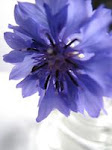"LYING WITH THE ENEMY" by Tim Binding
I can't believe it's been over a year and a half since I posted anything to this blog. However, I do know the reason why. It's because I felt that I had to write full-blown, detailed reviews of each book. And consequently, I put off writing the reviews, causing me to forget details about the books.
I have decided to give only thumbnail reviews from now on, and post them as soon as I have read the book, or two or three at most. Contained in this post are the books I have read most recently.
Shown above, "Lying With the Enemy" tells about the German occupation of the British Island of Guernsey during WWII. I was particularly interested to get this book when I found it in The Owl bookstore, because I have read the bestseller, "The Guernsey Literary and Potato Peel Pie Society." Although both books deal with the same subject, Lying is a much more somber book than Potato Peel, which is far lighter in tone. Altough Potato Peel touches on the privations of the islanders, it very often does so with humor. Not so with Lying. We see the starvation, the cruelty of the German invaders, and in particular, the fraternization of the Guernsey women with the German troops. I found this book difficult to get into, but then it became a page turner as an island policeman tries to discover who murdered one of these women - a rich socialite who was once his lover.
"THE LEGACY OF LUNA" by Julia Butterfly Hill
I don't know if I would have picked up "The Legacy of Luna" if it hadn't been just a dollar on the hardcover discount table. I remember when Julia Butterfly Hill was occupying a giant redwood tree in California to prevent it and its neighbors from being logged. At the time, I thought she was a crazy tree hugger (not that I dislike tree huggers - I am one myself, but I hug my trees in private). But the more I read, the more I got to like and admire Hill. It took amazing stamina, determination and courage to live for two years high among branches violently tossed by winter storms. She is no environmental dilettante. In time she comes to love Luna, the redwood, not just as a symbol of the great redwood forests, but as an individual tree with a soul and a personality. Having studied the Celts, I realized that her feelings are in line with those of my ancient ancestors.
"THE LOST SYMBOL" by Dan Brown
I must admit that I read some reviews of "The Lost Symbol", the newest bestseller by Dan Brown. But, at least I read them after I read the book. I was surprised at how unkind the reviews were. The readers seemed to have expected that Brown undergo a metamorphosis as a writer since his last book, for what they complained about most was his style of writing, his plotting, his lack of romance between the protagonists, his use of clues and puzzles to solve a mystery. Whoa, people, Dan Brown is not going to change a very successful formula. While I wouldn't give it five stars, I did like it. I thought it was more suspenseful than a couple of his other books, and I liked how he wove the architecture of various buildings and monuments in Washington, DC into his story. Washington is one of my favorite cities (and it is obviously his too) and I loved how he explained the hidden symbols within the Washington Monument, the Capitol Rotunda and the National Cathedral (one of my favorite places on earth).
"THE PAINTED KISS" by Elizabeth Hickey
Although I had heard of the painter Gustav Klimt before, I was not really acquainted with any of his works. The book is fictional, but is based on his relationship with a real-life woman, Emilie Floge. She was the subject of the Klimt painting featured on the book's cover. Emilie, who later became a famous Viennese fashion designer, met Klimt at age 12 when she was his drawing student. She had a friendship with him that lasted the rest of his life (although he is quite an unlovable character, she loved him very much). That she was his longtime companion and confidante is undisputed, whether or not they were lovers is. I especially enjoyed the portrait of bohemian Vienna at the turn of the century. Hickey brings the city, the food, the fashions, the manners, the society, the arts and the artists to vibrant life. The next time I see a Klimt painting I will surely recognize it.
"THE SECRET OF LOST THINGS" by Sheridan Hay
Rosemary Savage is only 18 years old when she arrives in New York City from far distant Tasmania. Incredibly - it seemed to me - she finds a job at an antiquarian bookstore within a matter of days. At The Arcade, she meets a cast of extermely eccentric characters, some nice, some not so nice. There's the irascible owner George Pike, his creepy albino assistant Walter Geist, gay Art of the art department, the sympathetic transsexual cashier Pearl, and Oscar, the nonfiction specialist with whom Rosemary is infatuated. There is an unsatisfying end to a mystery involving a lost manuscript by Herman Melville. Having slogged through "Moby Dick" in junior English class, I am not a huge fan of Melville, and I'm not a huge fan of this book either. Equally unsatisfying is the unexplained, abrupt departure of Oscar at the end of the book.




